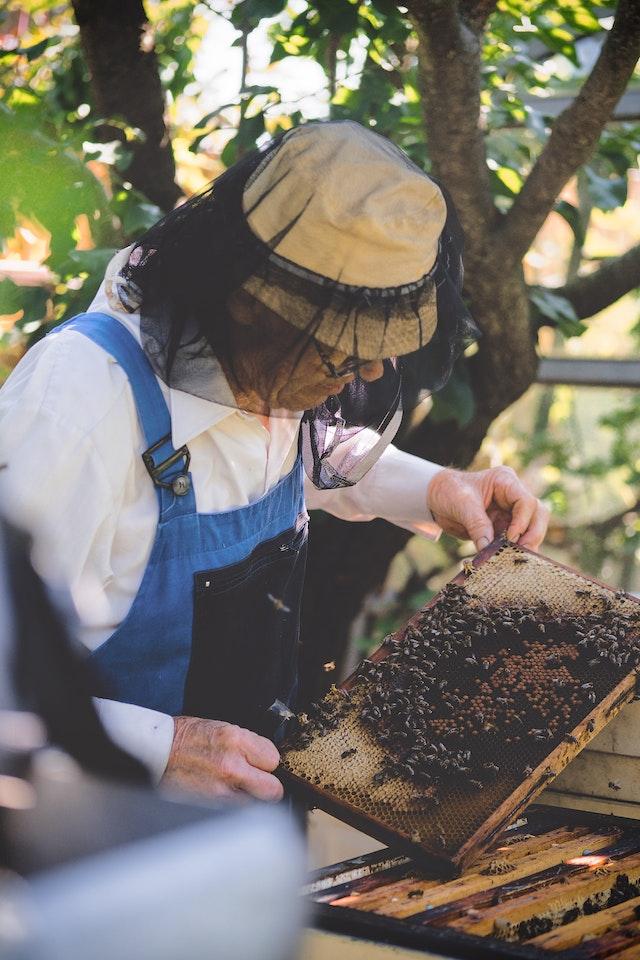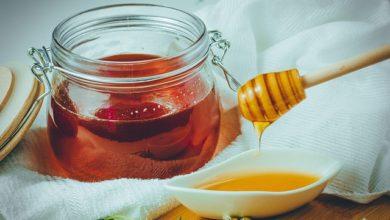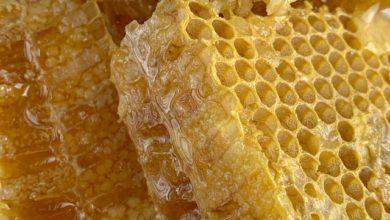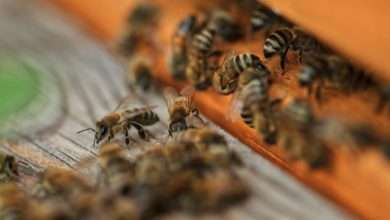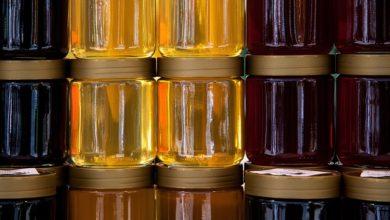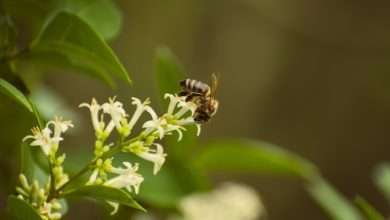Why is My Honeycomb Black?

An indication that honeycomb is being used to raise bee offspring is when portions of the honeycomb get dark or even black.
A buildup of pollen, bee spit, and other detritus is what causes the bee frames to turn black. Baby bees are repeatedly raised in the same honeycomb cells, which are then utilized to house new bees.
These wax combs are made by honey bees, who use them to build their interior structure. Although it initially seems white, new beeswax quickly turns darker. You will have a black honeycomb if it is kept in your colony for a few seasons.
A beginner beekeeper could feel very disoriented when they discover a very dark or even black honeycomb inside a hive. It takes beeswax some time to darken that much, which is why. Although you can get older comb in the package if you buy nucleus colonies.
The honey bees’ production of beeswax makes it a wonderful substance. Special wax glands with the ability to produce wax can be found on the underside of the body of worker bees.
We are all familiar with the comb since it is made of these white wax scales. While virgin honeycomb is exquisite, you must reject it when it begins to become a little dark. It will eventually be a good idea to reapply your wax, though.
What Makes Honey Combs Dark?
The brood nest of the hive is where you will most frequently find dark brown honeycombs. Even honey super comb, though, can get darker over time. The beeswax absorbs dirt, stains, and other substances.
Everyday Bee activities
Pupal cocoons
Propolis
Overuse as Brood Comb
Fresh honeycomb is stunning, yet the bees do not make it even though it is so, at least not that we are aware of. The colony continuously uses the hexagon-shaped cells that the bees create.
Every hour of the day, hundreds of tiny feet walk across the comb’s surface. Do they all clean their feet before entering the hive? Not at all, no.
Food for the colony’s daily requirements is stored in wax cells. There are additional regions with food that can be used to survive the winter.
The honeycomb darkens to some extent when exposed to both honey and bee pollen. Additionally, the region of the hive where the young are nurtured is most likely to still have dark or even black honeycomb.
Nurse bees travel thousands of miles per day to feed the developing larvae that are housed in brood cells. During this growing stage, the bee brood needs a lot of care. The beeswax becomes somewhat stained as a result of all the foot circulation. This implies that you will have some dark honeycomb.
Pupal Cocoons
The comb’s color variations are influenced by another element of the honey bee life cycle. The bee pupae are housed inside a capped cell during its last stage of development.
Pupal cocoons that are sticky are created during the transition. These cocoon linings are shed when the newborn bees emerge. This indicates that the beeswax comb darkens and the cell diameter shrinks over time.
Of course, given enough time, even combs beyond the area where the brood nests are located may turn black.
Replacing Black Bee Frames
Beekeepers ought to swap out worn-out black honeycomb in order to maintain colony health. A substance introduced to the hive as well as everything inside it is absorbed by beeswax. Pollen, propolis, and honey are sources of hazardous chemicals in addition to their colors.
The wax might contain any substances that foraging bees bring into the hive. Baby bees in the future are in danger from viruses and pesticides. These contaminants might only be present in little quantities, not enough to cause the colony to perish, but that does not mean they are harmless.
Additionally, outdated combs used by beekeepers might also add to the issue. Some treatments are used to control varroa mites or for other problems that might accumulate in the comb.
I’m not worried about the black honeycomb you can see. The true issue is with any hidden pollutants that may be present in the wax. The ideal approach is to rotate old frames out of the hive before they become too old.
Additionally, a few frames are changed yearly in this process. The colony won’t have to start again from scratch with every frame at once as a result.
Comb Honey Production
Specialized management methods are employed by beekeepers who focus on generating stunning white honeycomb. Once the honey is ready, honey supers are swiftly taken out of service.
They don’t want the comb surface to become stained by the bees’ everyday traffic of climbing through the boxes. For numerous years, these beekeepers have not used a recycled comb. In order to keep their honey boxes stable, they must lay a new foundation every season.
What To Do with Your Old Comb
- I believe that the wax is not suitable for many uses once it has turned black comb. Probably lacking the equipment or chemicals needed to bleach the wax is a hobby beekeeper.
- Quite a little wax, and it can even be very brown, is created when an ancient honeycomb is melted down. The color of the beeswax is not very significant in some crafts.
- Making and giving homemade fire starters is enjoyable, and it doesn’t matter what color the wax is. While wax can be colored with pigments, I don’t believe that using an old, dark comb is a good idea for tasks involving candles.
- Darker beeswax can be used for tasks like making soy wax tarts or similar ones if you intend to color your wax item.
- Using an old, dark honeycomb to entice bee swarms to my traps has proven to be the finest application for it that I have discovered. Scouting bees are drawn to the smell of this aged wax. Furthermore, you haven’t lost much if wax moths eat the frame.
- When the comb in the hive becomes quite dark, give your bee colonies a few fresh frames to work on to keep them healthier and more productive.
FAQs
What is a dark honeycomb?
Dark honeycomb, which has held brood, is often referred to as black honeycomb or brood comb (bee larvae). The extra care given to brood cells to aid in the development of the bees within them is a factor in the darker hue.
What can you do with old black honeycomb?
Using an old, dark honeycomb to entice bee swarms to my traps has proven to be the finest application for it that I have discovered. Scouting bees are drawn to the smell of this aged wax. Furthermore, you haven’t lost much if wax moths eat the frame.
Do bees like dark honeycomb?
The fragrance of dark comb repels bees. It works well as an attractant for swarm traps. I have discovered that a queen bee frequently picks a new comb over an old, dark comb when given the option.
Can you eat dark honeycomb and dark capped honey?
If the honeycomb is dark in color but not just due to time spent in the hive, it should be safe to consume. Black honeycomb is not something I would eat personally.
It ought to be alright once the honey is drawn. A lighter variant, however, might taste better when consumed as a raw honeycomb.
How long does it take a comb to turn dark?
Beeswax takes a variety of times to get dark. Every four to five years, the majority of beekeepers try to replace their brood honeycomb.
Will honey harvested from dark honeycomb be darker in color? Not typically, however, some discoloration may happen if light varieties of honey are kept in dark comb for an extended period.
